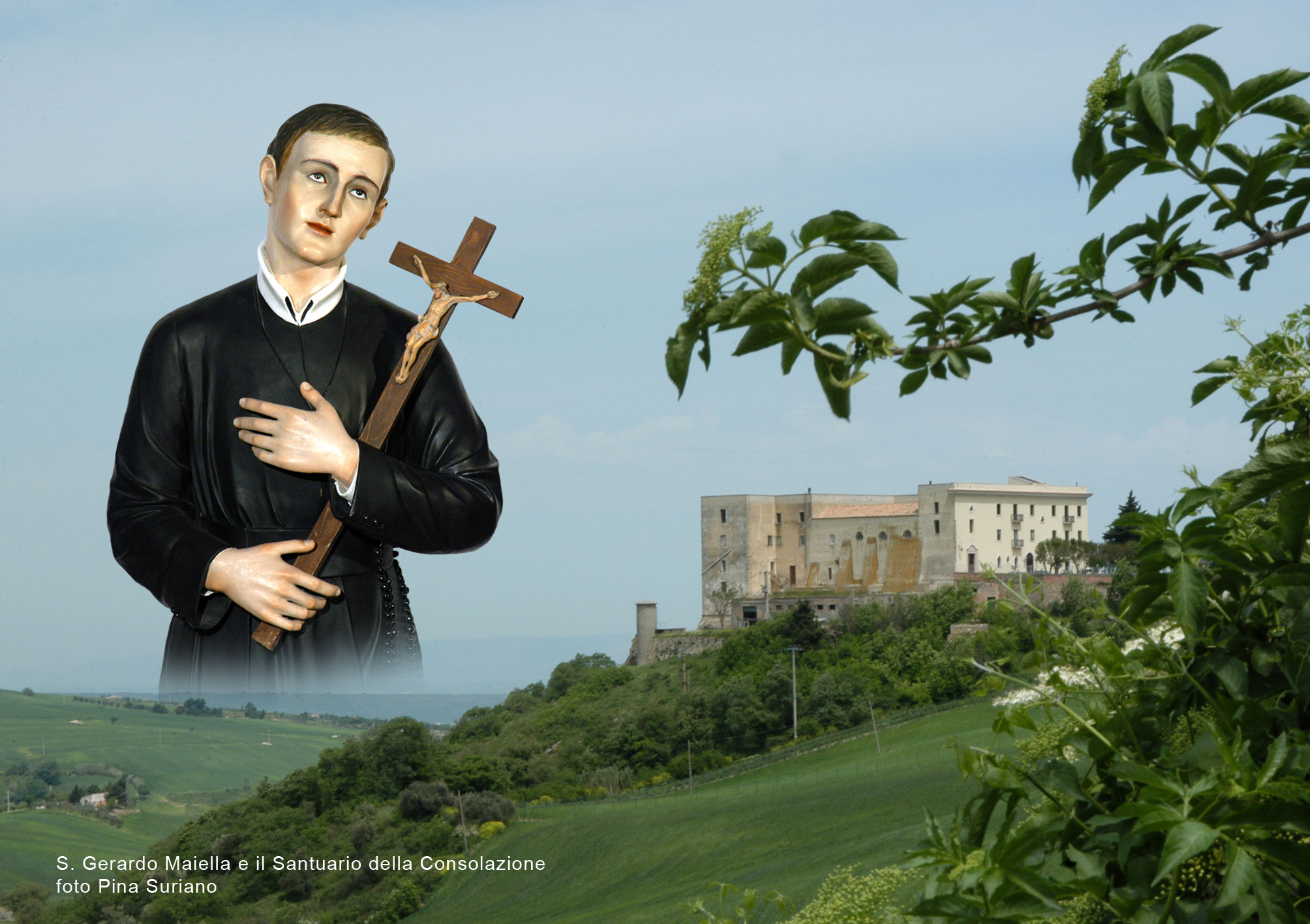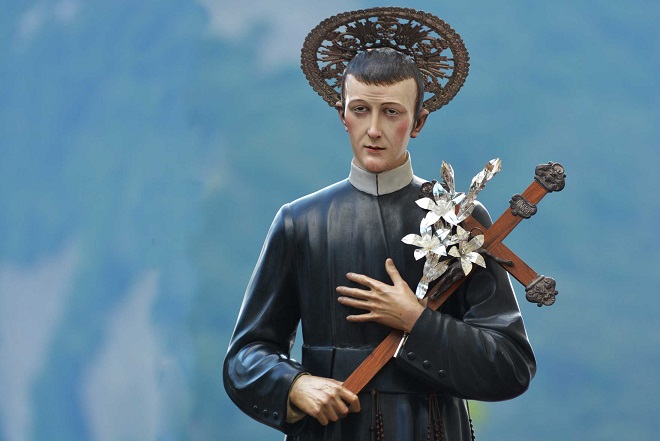October 16: Supplication to San Gerardo Maiella
O Saint Gerard, you who with your intercession, your graces and your favors, have guided innumerable hearts to God; you who have been elected comforter of the afflicted, relief of the poor, doctor of the sick; you who make your devotees cry in consolation: listen to the prayer that I turn to you confidently. Read in my heart and see how much I suffer. Read in my soul and heal me, comfort me, console me. You who know my affliction, how can you see me suffer so much without coming to my aid?
Gerardo, come to my rescue soon! Gerardo, make sure that I too am in the number of those who love, praise and thank God with you. Let me sing his mercies together with those who love me and suffer for me. What does it cost you to listen to me?
I will not cease to invoke you until you have fully fulfilled me. It is true that I do not deserve your graces, but listen to me for the love you bring to Jesus, for the love you bring to Mary most holy. Amen.
San Gerardo Maiella is the patron saint of pregnant women and children. There are many stories of extraordinary healing attributed to him; stories of a man of faith who answered the emotion felt at the tears of mothers and the wail of children with the prayer of the heart: the one imbued with faith, the one that pushes God to perform miracles. Its cult over the centuries has crossed Italian borders and is now widespread in America, Australia and European countries.
His is a life of obedience, hiding, humiliation and effort: with the unceasing will to conform to the crucified Christ and the joyful awareness of doing his will. Love for one's neighbor and for the suffering make him an exceptional and indefatigable thaumaturge who heals the spirit first - through the sacrament of reconciliation - and then the body by performing unexplained healings. During its twenty-nine years of earthly life it has operated in many southern countries, between Campania, Puglia and Basilicata. These include Muro Lucano, Lacedonia, Santomenna, San Fele, Deliceto, Melfi, Atella, Ripacandida, Castelgrande, Corato, Monte Sant'Angelo, Naples, Calitri, Senerchia, Vietri di Potenza, Oliveto Citra, Auletta, San Gregorio Magno, Buccino, Caposele, Materdomini. Each of these places professes a sincere cult, also in memory of the prodigious events that took place, facts related to the presence of that young man who was soon considered a saint on earth.
He was born in Muro Lucano (PZ) on April 6, 1726 by Benedetta Cristina Galella, a woman of faith who transmits to him the awareness of God's immense love for his creatures, and by Domenico Maiella, a hardworking and rich in faith but modest tailor economic condition. The spouses are convinced that God is also there for the poor, this allows the family to face the difficulties with joy and strength.
Already from early childhood he was attracted to places of worship, especially in the chapel of the Virgin in Capodigiano, where the son of that beautiful lady often detached herself from her mother to give him a white sandwich. Only as an adult will the future saint understand that that child was Jesus himself and not a being from this earth.
The symbolic value of that bread facilitates in the child the understanding of the enormous value of the liturgical bread: at only eight years old he tries to receive the first communion but the priest rejects it because of his young age, as was customary at that time. The following evening his wish is granted by St. Michael the Archangel who offers him the coveted Eucharist. At twelve, the sudden death of his father made him the main source of livelihood for the family. Become a tailor apprentice in Martino Pannuto's workshop, a place of marginalization and mistreatment for the presence of young boys often in arrogant and discriminating attitudes towards his docility of mind. His master, on the other hand, has great confidence in him and in periods when work is scarce he takes him to cultivate the fields. One evening Gerardo inadvertently sets fire to the haystack while he was there with Martino's son: it is general panic, but the flames go out instantly at a simple sign of the cross and relative prayer of the boy.
On June 5, 1740, Monsignor Claudio Albini, Bishop of Lacedonia, gave him the sacrament of Confirmation and took him on duty at the episcopate. Albini is known for his rigor and lack of patience but Gerardo is happy with the hard-working life that leads him and lives reproaches and sacrifices as faint gestures of imitation of the Crucifix. To them he adds corporal punishment and fasting. Here too unexplained events occur, such as when the keys to Albini's apartment fall into the well: he runs to the church, takes a statue of the baby Jesus and invokes his help, then ties it to the chain and drops it with the pulley. When the icon is hoisted again it is dripping with water but it holds the lost keys in hand. Since then the well is called Gerardiello. When Albini died three years later, Gerardo mourns him as an affectionate friend and second father.
Returning to Muro, he tries for a week the experience of a hermit in the mountains, then he goes to Santomenna to his Capuchin uncle Father Bonaventura, to whom he confides the will to dress the religious habit. But his uncle rejects his will, partly because of his poor health. From that moment and until he is accepted among the Redemptorists his desire always runs up against general denial. Meanwhile, the nineteen year old opens a tailor's shop and fills out the tax return in his own hand. The craftsman lives a modest condition because his motto is who has something and who does not take the same. His free time is spent in adoration of the tabernacle, where he often dialogues with Jesus to whom he affectionately gives a fool because he chose to be imprisoned in that place for the love of his creatures. His illibated life is the object of attention of his fellow villagers who induce him to get engaged, the boy is in no hurry, he replies that he will soon communicate the name of the woman of his life: he does it on the third Sunday of May when twenty-one years old jumps on the platform that he parades in procession, puts on his ring to the Virgin and consecrates himself to her with a vow of chastity, while he says loudly that he has become engaged to the Madonna.
The following year (1748), in August, the fathers of the very young Congregation of SS. Redeemer, founded for sixteen years by Alfonso Maria de Liguori, future saint. Gerardo also asks them to welcome them and receives various refusals. Meanwhile, the young man participates in the liturgy: on April 4, 1749, he was chosen as a figure of the image of Christ crucified in the representation of the Living Calvary on the Wall. The mother passes out when she sees her son dripping with blood from the body and the head pierced by a crown of thorns in a silent and astonished cathedral for the renewed awareness of the sacrifice of Jesus, as well as for the punishment felt towards the young person.
On April 13, Sunday in Albis, a group of Redemptorists arrives in Muro: they are intense days of adoration and catechesis. Gerardo participates with fervor and shows assertiveness in his desire to be part of the Congregation. The fathers once again reject his will and on the day of departure they advise the mother to lock him up in the room to prevent him from following them. The boy does not lose heart: he ties the sheets together and leaves the room leaving a prophetic note to his mother, saying "I'm going to be a saint".
He implores the fathers to test him, having reached them after several kilometers of walking in the direction of Rionero in Volture. In the letter sent to the founder Alfonso Maria de Liguori, Gerardo is presented as a useless, fragile and poor health postulant. Meanwhile, the 16-year-old is sent to the religious house of Deliceto (FG), where he will cast his vows on 1752 July XNUMX.
They send him as a "useless brother" to various Redemptorist convents, where he does everything: the gardener, the sacristan, the concierge, the cook, the man in charge of cleaning the barn and in all these humble simple tasks the "useless" ex-boyfriend he practices seeking the will of God.
One fine day he suffers from tuberculosis and has to go to bed; at the door of his cell he had writing; "Here the will of God is done, as God wants and as long as God wants."
He died on the night between 15 and 16 October 1755: he was only 29 years old, only three of whom spent in the convent during which he made great strides towards holiness.
Beatified by Leo XIII in 1893, Gerardo Majella was proclaimed saint by Pius X in 1904.

